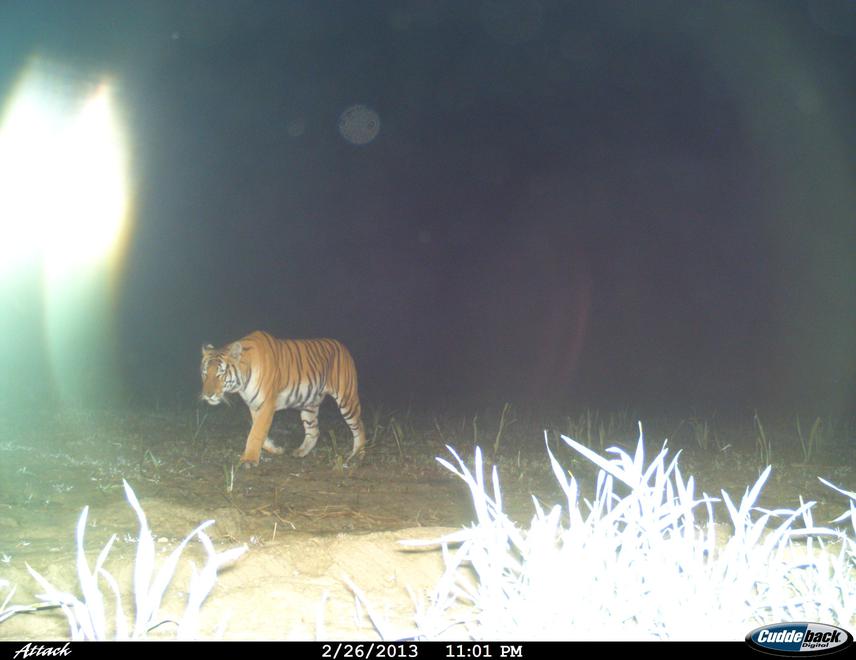Rekha Warrier
The project aims to generate information on the ecological and social factors that facilitate the persistence of large mammals such as tigers, elephants and swamp deer outside protected area boundaries in the Central Terai Landscape.

Tiger in sugarcane field.
The proposed project will generate information essential to large mammal conservation in the Central Terai Landscape (CTL) in the state of Uttar Pradesh, India. The CTL is one of the most populated regions in the world with human densities of 550 people/sq.km (Census of India, 2011). This human-dominated, landscape however, supports threatened populations of large mammal species such as tigers, leopards, elephants and swamp deer (Chanchani et al., 2014). While populations of these species primarily occur within a system of small and insular protected areas (PAs) such as Dudhwa Tiger Reserve and Pilibhit Tiger Reserve, these species also occur beyond PA boundaries, within the human dominated areas (matrix). In the matrix, the presence of land-uses such as sugarcane and wheat cultivation, availability of domestic and wild prey, remnant forest patches and favourable human attitudes, offer movement, cover and foraging opportunities to these species. Matrix areas of the CTL not only help extend the habitat currently made available by PAs, but also offer avenues to connect otherwise isolated populations of tigers and elephants.
Despite their importance, matrix areas adjoining PAs have remained outside the conservation purview. Consequently, few mechanisms exist to check issues such as land-use change and human-wildlife conflict that over time reduce the ecological and social capacity of these areas to support large mammals. The project aims to address this issue by aiding in the development of a landscape scale conservation strategy for large mammals in the CTL. A key aspect of this strategy is the extension of conservation action to strategic areas outside PAs through policy and payment mechanisms. Successfully devising and implementing this strategy however, hinges on gaining a clear understanding of the spatio-temporal dynamics, underlying causes and consequences of large mammal use of these areas and the willingness of local communities to participate in conservation endeavors. The proposed project will generate information on these fronts using contemporary techniques in ecological and social research such as dynamic occupancy modeling (MacKenzie et al., 2003) and choice experiments (Hanley & Barbier 2009).
The project will result in a conservation plan for matrix areas of the CTL developed in collaboration with WWF-India and the State Forest Department. This plan will include:
1) recommendations for the preservation of key areas and land-uses in the matrix that are of large mammal conservation relevance;
2) recommendations to help ameliorate losses to communities resulting from their interactions with large mammals in the matrix.